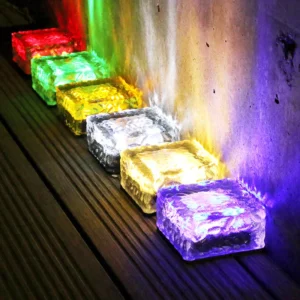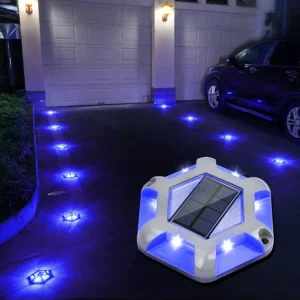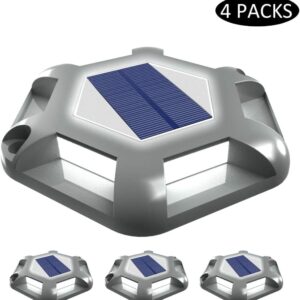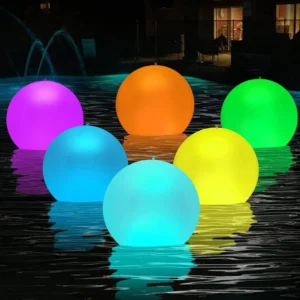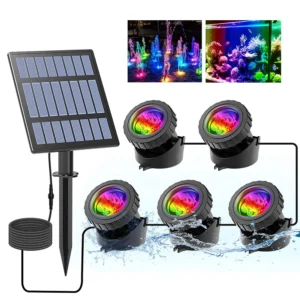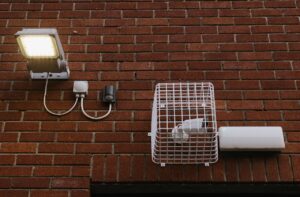As LED solar lights gain popularity, solar inground lights have emerged as a top choice for eco-conscious homeowners. These innovative lighting solutions not only enhance outdoor aesthetics but also offer practical benefits. This article explores the functionality, advantages, and applications of solar inground lights, showcasing why they’re an excellent addition to any outdoor space.
What Are Solar Inground Lights?
Solar inground lights are innovative lighting fixtures designed to be installed flush with the ground, providing a sleek and unobtrusive illumination solution for outdoor spaces. These lights are typically housed in durable enclosures, often made from stainless steel or high-grade plastic, which helps protect the internal components from environmental damage.
One of the key features of solar inground lights is their waterproof certification, usually rated at IP65 or higher. This rating indicates that the lights are resistant to dust and can withstand water projected from a nozzle, making them suitable for various outdoor conditions, including rain, snow, and high humidity. This durability ensures that solar inground lights can operate reliably throughout the year, regardless of the weather.
In addition to their robust construction, solar inground lights are equipped with small solar panels that capture sunlight during the day. These panels convert solar energy into electricity, which is then stored in built-in batteries. This energy is used to power the LED lights at night, providing efficient and sustainable illumination.
Another notable feature is their compact design, which allows them to be easily integrated into a variety of landscapes without obstructing sightlines. This makes them perfect for use in pedestrian walkways, gardens, and decorative landscaping. Many models also come with adjustable brightness settings and automatic light sensors, enabling them to turn on at dusk and off at dawn, further enhancing their energy efficiency and user convenience.
Common Applications of Solar Inground Lights
Solar inground lights are highly versatile and can be effectively used in various outdoor settings, enhancing both functionality and aesthetics. Here are some of the most common applications:
Gardens: Solar inground lights are ideal for illuminating flowerbeds, pathways, and garden features. They help highlight the beauty of plants and flowers at night, creating a magical atmosphere while ensuring safe navigation through the garden.
Parks and Recreational Areas: These lights are commonly used in public parks to improve safety and visibility after dark. They can be strategically placed along walking trails, near playgrounds, and around benches, providing a welcoming environment for visitors and encouraging evening activities.
Walkways and Driveways: Solar inground lights are perfect for enhancing the safety and appearance of walkways and driveways. By providing subtle illumination, they help prevent accidents and guide guests to their destinations, making outdoor spaces more accessible.
Patios and Decks: Inground lights can be installed around patios and decks to create a warm and inviting ambiance for outdoor gatherings. They can be used to outline seating areas, highlight architectural features, or illuminate steps for added safety.
Water Features: Placing solar inground lights around fountains, ponds, or waterfalls can dramatically enhance the visual appeal of these features. The lights reflect off the water, creating a stunning display that draws attention and adds to the overall landscape design.
Commercial Spaces: Many businesses use solar inground lights to enhance their outdoor areas. They can be found in restaurant patios, hotel gardens, and shopping centers, improving ambiance while also ensuring safety for patrons during nighttime hours.
Landscaping: Beyond functionality, solar inground lights play a crucial role in landscaping design. They can be used to accentuate specific features, such as trees, shrubs, or decorative rocks, creating focal points in gardens or yards.
How Do Solar Inground Lights Work?
Solar inground lights operate using a straightforward yet efficient mechanism that harnesses solar energy to provide illumination. Here’s a detailed outline of their functionality and key components:
Solar Panels: At the heart of solar inground lights are small solar panels, typically made of photovoltaic cells. These panels capture sunlight during the day, converting solar energy into electrical energy. The efficiency of the solar panel determines how much sunlight it can convert, impacting the overall performance of the light.
Battery Storage: The electrical energy generated by the solar panels is stored in built-in rechargeable batteries, commonly lithium-ion or lead-acid. These batteries are designed to hold enough power to run the LED lights throughout the night, ensuring consistent illumination. The capacity of the battery influences how long the lights can operate after sunset.
LED Light Source: Solar inground lights typically use LED bulbs due to their energy efficiency and long lifespan. LED lights consume less power compared to traditional bulbs while providing bright illumination. This feature is particularly beneficial for solar-powered systems, as it maximizes the use of stored energy.
Light Sensors: Many solar inground lights are equipped with light sensors that automatically detect ambient light levels. When darkness falls, the sensors trigger the lights to turn on, ensuring they illuminate automatically without the need for manual control. This feature not only enhances convenience but also optimizes energy usage by ensuring lights are only on when needed.
Durable Construction: Solar inground lights are designed to withstand various environmental conditions. The housing is typically made from materials like stainless steel or high-quality plastic, providing durability and resistance to weather elements. The waterproof rating (often IP65 or higher) ensures protection against rain, snow, and moisture, making them suitable for outdoor use.
Installation and Setup: Installation of solar inground lights is straightforward and does not require complex wiring or electrical knowledge. Most models come with a simple setup process—often just a matter of placing them in the ground or attaching them to a surface. This ease of installation makes them accessible for a wide range of users.
Maintenance: Solar inground lights require minimal maintenance. Occasional cleaning of the solar panels is necessary to ensure optimal sunlight absorption. Additionally, checking the batteries periodically helps ensure they are functioning correctly and have not reached the end of their lifespan.
By integrating these components, solar inground lights offer a sustainable and efficient lighting solution that operates independently of the electrical grid, making them an attractive option for various outdoor applications. Their combination of energy efficiency, automatic operation, and low maintenance needs makes them a compelling choice for environmentally conscious consumers.
Advantages of Solar Inground Lights Over Traditional Options
Solar inground lights offer several significant advantages compared to traditional lighting systems, making them an attractive choice for outdoor illumination. Here are the key benefits:
Wireless and Easy Installation:
One of the standout features of solar inground lights is their wireless design. Unlike traditional lights, which often require complex wiring and connections to the electrical grid, solar inground lights can be installed virtually anywhere without the need for an electrician. This simplicity allows homeowners to easily place lights in desired locations, whether in gardens, pathways, or driveways. The absence of wires eliminates tripping hazards and reduces installation time, making these lights accessible for DIY enthusiasts and professionals alike.Automatic Switches for Energy Efficiency:
Many solar inground lights come equipped with built-in light sensors that automatically turn the lights on at dusk and off at dawn. This automatic functionality ensures that the lights operate only when needed, maximizing energy efficiency. By eliminating the need for manual operation, users can enjoy consistent illumination without worrying about forgetting to switch them on or off. This feature not only enhances convenience but also conserves battery life, allowing for longer periods of illumination each night.Cost Savings (No Power Bills):
One of the most appealing advantages of solar inground lights is their ability to operate without incurring electricity costs. These lights harness solar energy during the day, converting it into electricity for nighttime use. As a result, homeowners can enjoy beautifully lit outdoor spaces without the burden of rising utility bills. Over time, the savings on electricity can offset the initial investment in solar lighting, making them a financially savvy choice for long-term outdoor illumination.Manual Switch for Battery Conservation:
Solar inground lights often feature a manual switch that allows users to turn the lights off when they are not in use. This functionality is particularly beneficial during seasons when outdoor lighting is less necessary, such as winter. By manually switching off the lights, users can conserve battery life and prolong the lifespan of the batteries. This control enables homeowners to effectively manage their solar lighting systems, ensuring they remain efficient and functional when needed.
Conclusion
Incorporating solar inground lights into your outdoor spaces not only enhances the ambiance but also promotes sustainability. With their easy installation, automatic features, and cost-saving benefits, these lights are the ultimate choice for modern outdoor lighting. Embrace the future of illumination by choosing solar inground lights for your home.









